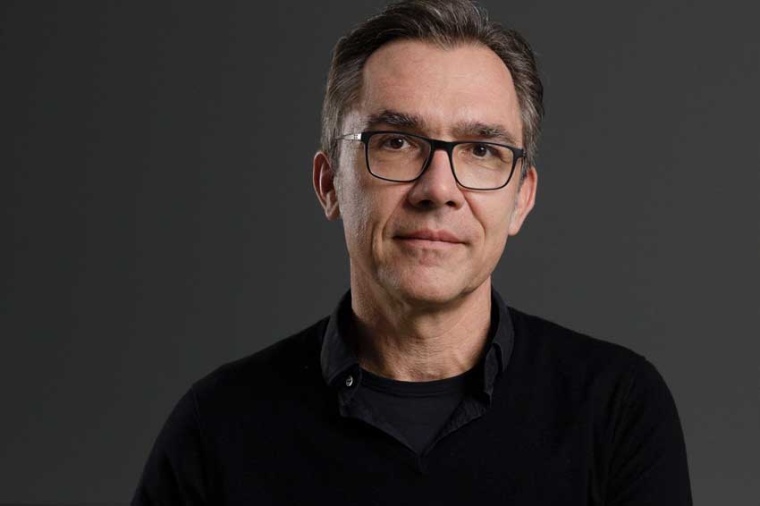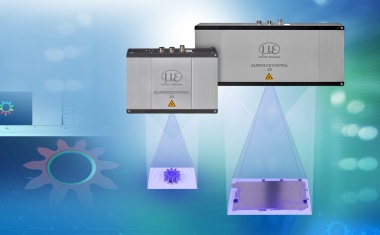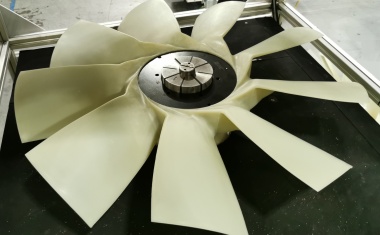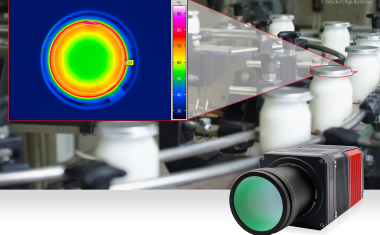“Invest in photonics to fight future pandemics”
Jürgen Popp: Light offers solutions to tackle infectious diseases
[Opinion] By harnessing photonics, we are producing solutions in fields as varied as next-generation farming, the environment, transport, industry and healthcare. Light technologies are recognized as revolutionary and beneficial to a number of sectors: driverless cars, 5G and Green technologies are all made possible by the generation, detection, manipulation, emission, transmission, modulation, processing, switching, amplification, and sensing of light.

The threat of infectious diseases and antimicrobial resistance is just one case to illustrate that now is the time to commit to strong investment in photonics. Investment in photonics is more crucial now than ever. Fast, clean and precise, photonics can build advanced diagnostics, pervasive monitoring and innovative e-health applications that can detect body signals, symptoms and diseases at very early stages.
Detecting with Light
Covid-19 has shown us that we, as a species in many regions of the world have been unprepared for a dangerous pandemic. Nations all over the world have lacked the necessary capacities to test for infectious diseases, meaning responses have been delayed and adequate measures not taken at appropriate times.
It is in this critical time period – the testing and initial response – that determines our ability to control or respond adequately to a threat. And it is in this crucial phase where photonics can provide unique solutions like no other technology owing to its speed and the rapid time it can deliver information.
Photonics can deliver instantaneous information about the health status of a patient to determine whether they are suffering from a condition that is caused by a virus or a bacterium. Indeed, one of the unique selling points of light technologies is that results can be determined on-site, in-situ without having to send samples to a laboratory and await analysis – all of which can take days or sometimes weeks.
Infectious diseases can have a number of causes, including bacteria, viruses, fungi, or even parasites, and can be transmitted from person-to-person, or animal-to-person. There are many infectious diseases that pose a danger to our species, like influenza, AIDS / HIV, malaria, tuberculosis, SARS, ebola or zika. This serious threat requires drastic, urgent solutions and has been highlighted by Covid-19 this year.
With the global pandemic of 2020 caused by SARS-CoV-2, Covid-19 will be added to the three infectious diseases that account for the top ten leading causes of death worldwide, including lower respiratory infections, diarrheal diseases, tuberculosis.
Even before Covid-19, according to the World Health Organisation, the situation was worse in low-income countries in 2018, with five infectious diseases – Lower respiratory infections, diarrheal diseases, HIV/AIDS, malaria, tuberculosis – being a leading cause of death among the top ten.
Photonics projects currently tackling infectious diseases
At the time of writing, in Europe, the Photonics Public Private Partnership is funding many research projects to develop tools and techniques for infection diagnostics. The CoNVat consortium, for example, is developing an ultrasensitive laser sensor that detects Coronavirus at the earliest point of infection from a saliva or nasal swab in minutes.
Originally developed to look for bacterial infections or cancer biomarkers, the new ultrasensitive detector uses photonics to detect infections in patients with a small amount of the virus and will diagnose in real-time with high specificity from a low concentration sample.
Looking at tiny molecules, the new point-of-care detector examines virus antigens using miniaturized chips – or ‘nanophotonic biosensors’ – from a simple nasal or saliva swab.
Similarly, the RAIS consortium is making a bold bid to reduce the mortality rate from sepsis by more than 70% with their new detector using photonics to identify E. coli bacteria from a tiny drop of blood, producing a while-you-wait diagnosis in less than thirty minutes. Programmed to detect proteins and E.coli, one of the deadly bacteria that can cause the human body to go into septic shock, the detector then uses light to look for specific biomarkers (the tell-tale signs or an indicator of a disease) that are as small as few nanometers in size.
The rapid ‘microarray’ detector looks at a small blood sample taken from a thumb or forefinger. The patient’s blood sample is then separated in a centrifuge so that a clinician can examine the plasma, the part of the blood sample where all the proteins are contained.
Projects using spectroscopy and imaging to advance fast diagnosis of infection and sepsis
A powerful method for diagnosis of infection and sepsis has been researched within the EU-funded project “HemoSpec”. From a small amount of blood from the patient, the photonic-based algorithm can differentiate patients with sterile inflammation, infection and sepsis with high accuracy.
The algorithm is based on valuable information of the leukocyte’s activation state that can be extracted in a non-destructive and label-free manner using Raman spectroscopy. The technology is currently in translation together with the industry.
In order to provide the basis for a future decentralized application of Biophotonic technologies such as Raman spectroscopy as a novel diagnostic tool in hospitals and doctor’s offices, the EU COST action “Raman4Clinics” brought spectroscopists, clinicians and device manufacturer from all over Europe together to perform a large scale cross-laboratory study. This study assessed the comparability of Raman spectroscopic configurations of 35 Raman spectroscopic devices with different configurations in 15 institutes within seven European countries. Statistical data analysis played an important role in achieving comparability.
The European Union is currently funding EU the Innovative Training Network (ITN) “IMAGE-IN: Imaging Infections” within the Marie Skłodowska-Curie Actions (MSCA) to educate the next generation of scientists who can actively advance imaging technology for medical application, in particular, develop a new photonics-based method for fast diagnosis of difficult-to-treat infections but also for non-invasive treatment monitoring.
In further national funded projects, spectroscopists advance in close collaboration with physicians and live science researchers optical-spectroscopic methods for fast antibiotic susceptibility testing (AST). The aim is to reveal the infection-causing bacterial pathogen and its antibiogram within three hours directly from a minimal amount of the patient's sample. Ideally, the patient sample is easily accessible, such as a patient's urine or blood.
The joint research project ReHwIN focuses on nosocomial urinary tract infections that account for up to thirty percent of all nosocomial infections in Germany. The final photonic analysis system will combine microfluidic processing of a urine sample with a miniaturized and sensitive Raman spectroscopic readout platform and data analysis with artificial intelligence. The project InfectoXplore tackles bloodstream infections which are associated with high morbidity and mortality rates and require rapid therapy; otherwise, they can lead to sepsis. Within InfectoXplore, positive blood cultures will be analysed and a targeted and personalized photonics-based diagnostic algorithm will be developed that enables a tailored antibiotic therapy as quickly as possible.
Step up funding
While Europe has a wealth of researchers working on cutting edge photonics techniques, we cannot simply rest on our laurels. We need to ensure we are prepared against the next pandemic with a collective commitment to fund photonics.
Photonics is a global industry predicted to be worth a staggering 696 billion euros ($829B) by 2025. In parts of the world, photonics is recognized as having enormous potential and leverage. The China Central government increased its investment in photonics every year by forty percent, to reach 1 billion euros in 2020 while the South Korea government spending in photonics increased to 2.8 billion euros per year. While these figures sound impressive, we must recognize that the EU only commits 100 million euros on photonics every year – a tenth of the China equivalent.
Just recently, three of the world’s most eminent scientists criticized the European Commission’s intention to drastically cut photonics funding over the next seven years. In an open letter to the European Commission, the Nobel laureates criticized the decision to make a thirty percent reduction in funding support by the European Commission for a future Photonics Partnership 2021-2027 in Horizon Europe.Digital innovation which drives economic growth and creates jobs all across Europe, as well as critical healthcare will be at risk if the budget to fund the enabling technologies in photonics funding is slashed.
In short, photonics is a key enabler for a wealth of next-generation technological developments, as well as for humanity to mount an adequate response to future pandemics and health crises. Rather than stall, policymakers should recognize the threat pandemics which are caused by infectious diseases are capable of and how adequate photonics funding can see us prepared for a future outbreak.
For the sake of defending ourselves against future pandemics, now is the time to commit to a programme of strong investment in photonics. Jürgen Popp, Leibniz IPHT & LPI (Source: Photonics21)
Links: Photonics Public Private Partnership (PPP), European Technology Platform Photonics21, Düsseldorf, Germany • Leibniz-Zentrum für Photonik in der Infektionsforschung LPI, Jena, Germany











